Most of us have travelled in an Octavia at some point, most likely after several pints and a chicken doner. But thousands of minicab drivers can’t be wrong – prizing the Skoda’s reliability, practicality and easygoing nature. As we’ll see, it can be exciting too.
First launched in 1959, the Octavia is now into its fifth generation. We tell its story and drive some of the highlights from over the years. Turns out quite a lot has changed…
Skoda Octavia Combi – 1964

The Octavia took its name from the Latin word for ‘eight’, being the eighth post-war car built at Skoda’s Mlada Boleslav factory in the Czech Republic (Czechoslovakia at the time).
Its 1.1-litre four-cylinder engine sends 40hp to the rear wheels, giving a top speed of 70mph and 30.5mpg economy. Double wishbone suspension was considered innovative in an era of leaf springs, and the Octavia earned positive reviews from motoring magazines. The 50hp Touring Sport version later claimed three class victories in the Monte Carlo Rally (1961-1963).
Skoda Octavia Combi – 1964

The Octavia Combi estate – seen here – followed in 1961, with three doors and a horizontally-split tailgate (they’d probably call it a ‘shooting brake’ today). It has five seats and a 690-litre boot, swelling to 1,050 litres with the rear backrests folded.
A total of 51,086 Combis were made by the time production ceased in 1971, versus 309,020 Octavia saloons.
Skoda Octavia Combi – 1964
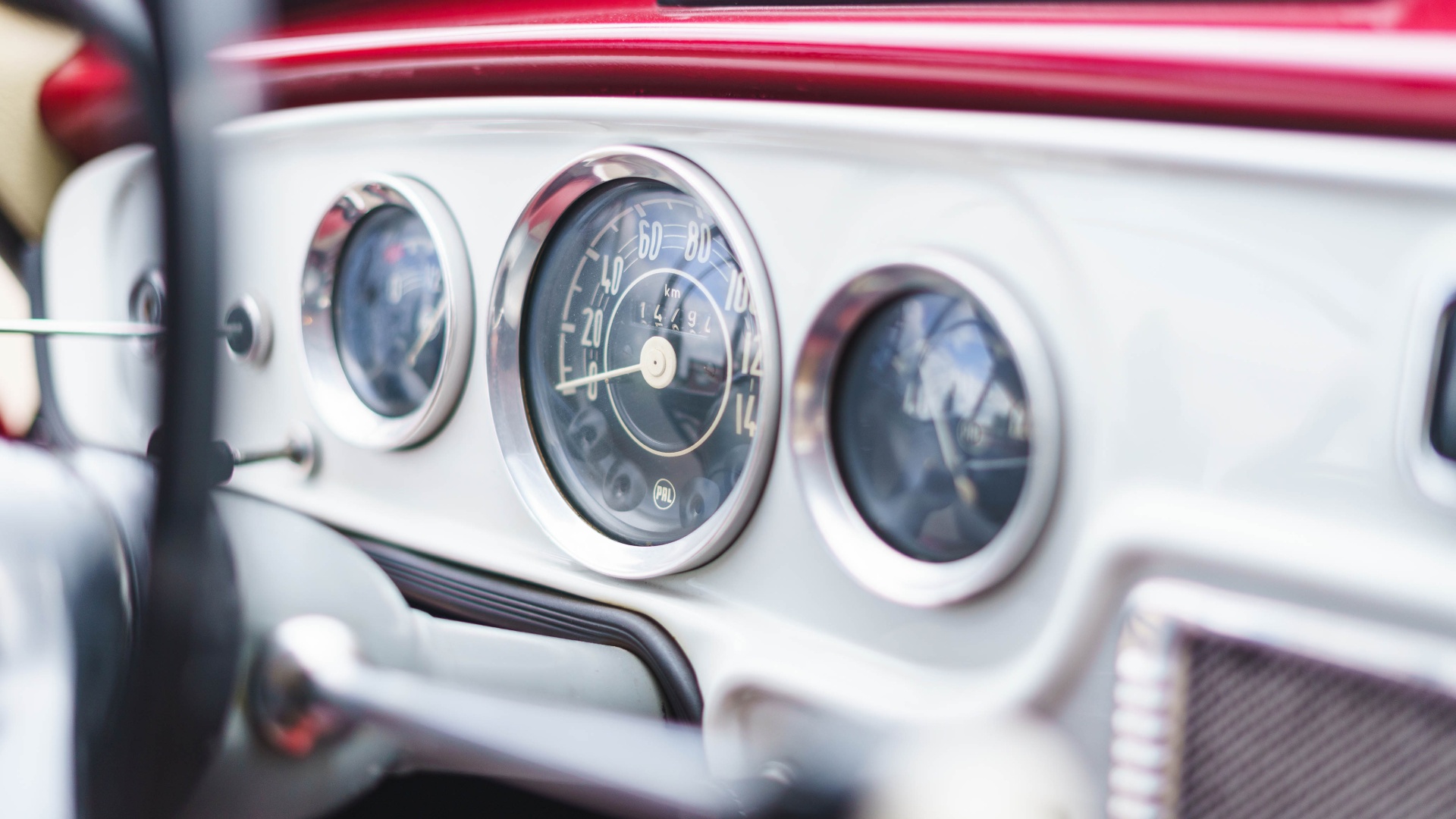
On loan from the Skoda Museum, this flawless 1964 Combi arrived with its own – justifiably proud – chaperone. Nonetheless, I was more nervous than him. Its chrome grille and tail fins are clearly influenced by American cars of the 1950s, while its two-tone interior oozes retro cool.
A huge, thin-rimmed steering wheel is flanked by a column shifter: push away and up/down for first and second gears, then pull towards you for third and fourth.
Skoda Octavia Combi – 1964
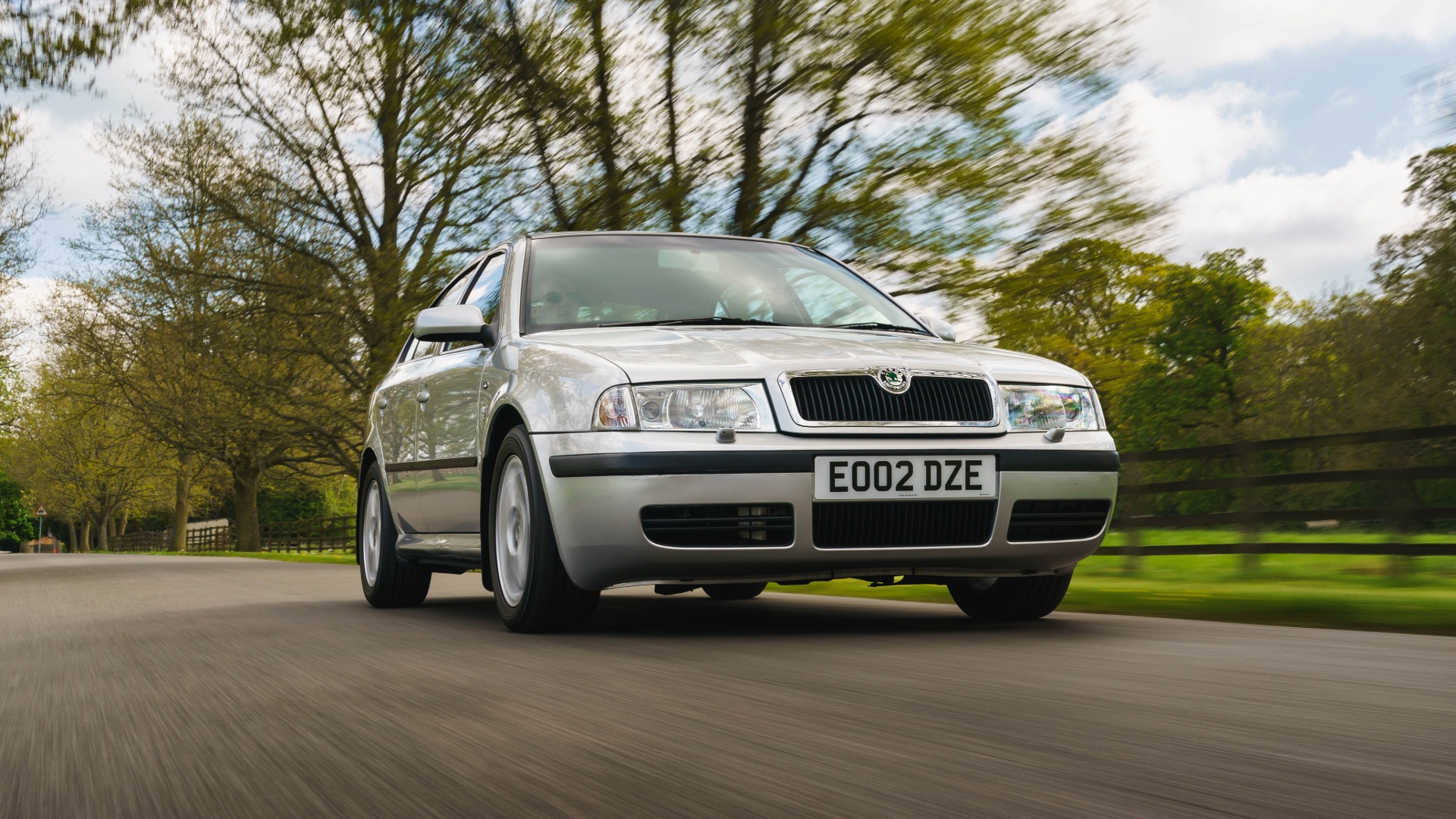
On today’s roads, the ‘family-sized’ Skoda is dwarfed by bloated SUVs. Its engine is thrummy and willing, at least until 40mph or so. Beyond that, acceleration is best described as ‘glacial’.
Stick-thin roof pillars mean excellent visibility, but the drum brakes are heart-stoppingly feeble. Seatbelts or crumple zones? No chance. Truth be told, I’m relieved to return the Combi safely to its keeper.
Skoda Octavia Mk1 – 2002

Trapped in the Eastern Bloc, Skoda struggled throughout the 1970s and 80s with a succession of outdated, rear-engined cars that sold primarily on price. The Octavia name wouldn’t return for another 25 years, then was revived under Volkswagen ownership.
An injection of Volkswagen cash from 1991 transformed the brand, starting with the 1995 Felicia, then the all-conquering Octavia a year later.
Skoda Octavia Mk1 – 2002

The Octavia shared its underpinnings with the Mk4 Volkswagen Golf, but was roomier and cheaper. Understandably, that sounded like a win-win for many buyers. Available as a five-door hatchback or estate, nearly 1.5 million were eventually built.
Its no-nonsense design, the work of Dirk van Braeckel, defined Skoda styling for generations to come. Indeed, you can still see its influence in the latest Octavia.
Skoda Octavia Mk1 – 2002

Fittingly, the 2002 Octavia on Skoda’s heritage fleet has covered a meaty 136,000 miles. An ex-taxi? Quite possibly, although it wears those miles impressively well. Its 110hp 1.9-litre diesel engine is good for 119mph and a thrifty 54.0mpg.
Inside, the cabin is functional and solidly built (Germanic, even). ‘Infotainment’ comes via a cassette player, but it feels positively futuristic after the classic Combi.
Skoda Octavia Mk1 – 2002
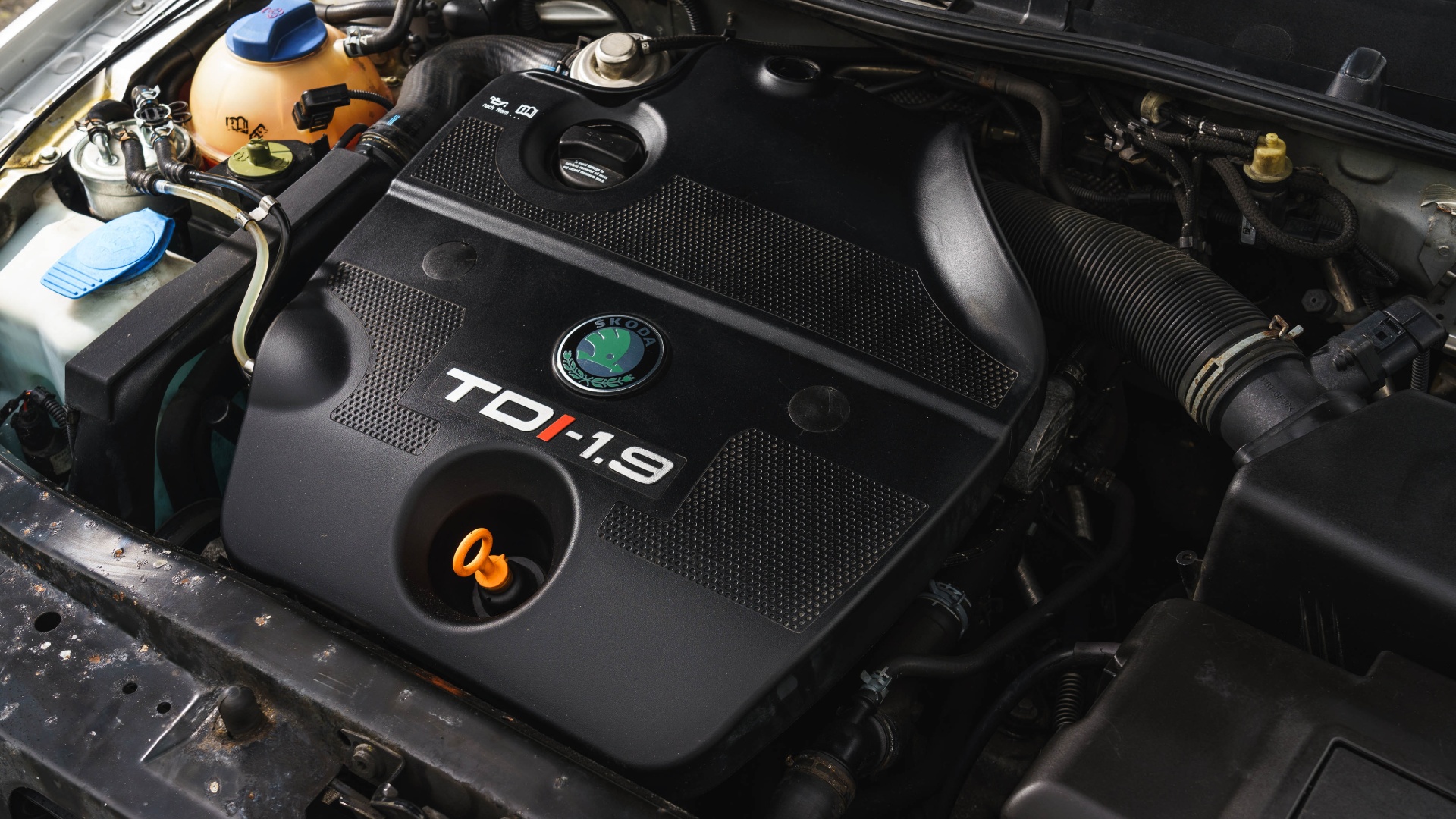
It’s effortless to drive, too. The bulbous, airbagged wheel is light, the five-speed gearbox is Teflon-slick and the gruff diesel pulls strongly from low revs.
It feels somewhat detached, but that’s perhaps the point. After a nine-hour night shift of pub pick-ups and airport aggro, I suspect I’d be thankful for such easygoing affability.
Skoda Octavia vRS Mk1 – 2004

The Mk1 Octavia also did performance, not simply private-hire. The first vRS debuted in 2001, providing a springboard for Skoda’s return to top-tier rallying.
It was the fastest production Skoda ever when launched, reaching 62mph in 6.7 seconds and 144mph flat-out.
Skoda Octavia vRS Mk1 – 2004
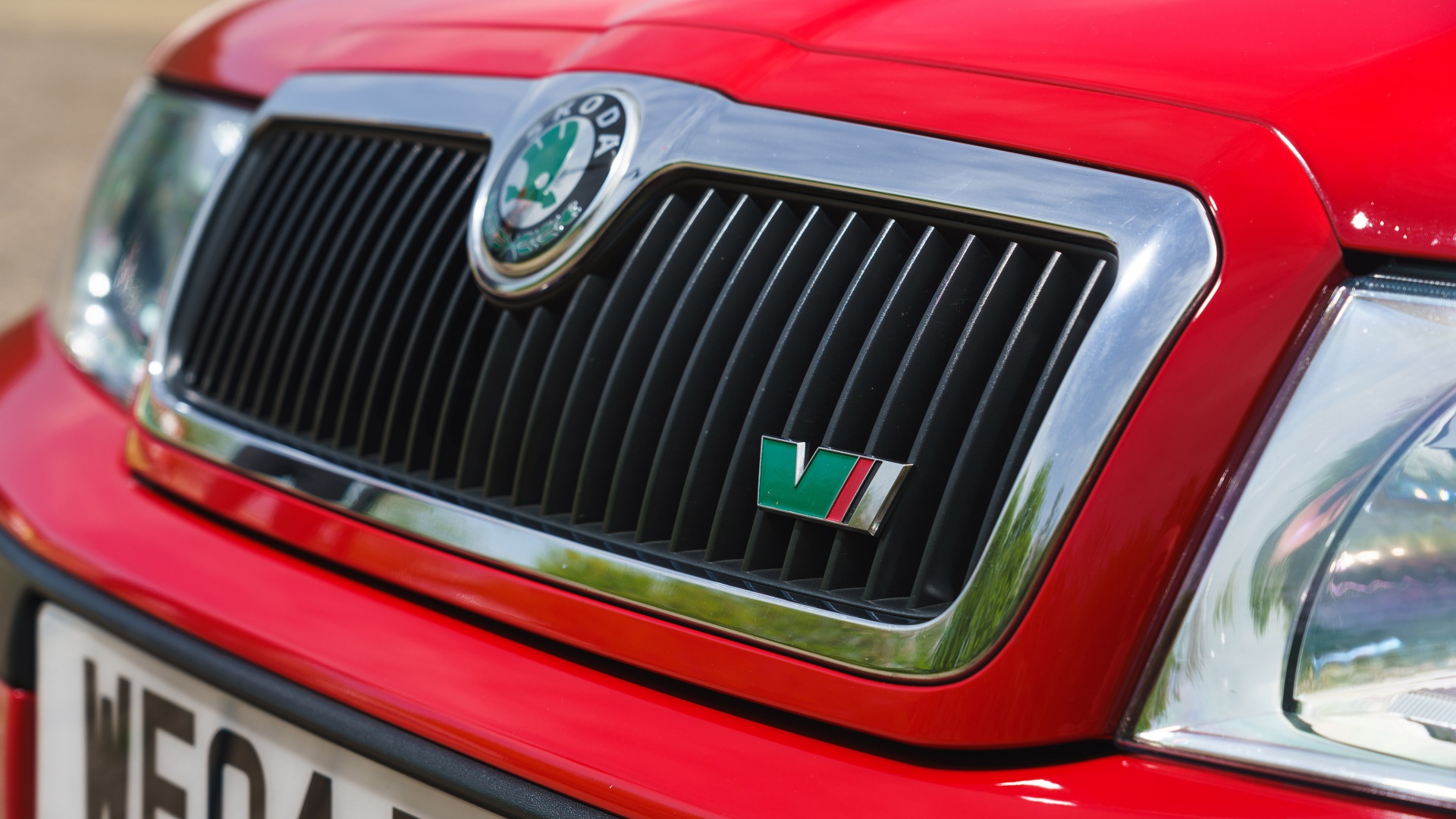
While the WRC version boasted 300hp and four-wheel drive, the road-going vRS shared its fundamentals with the Golf GTI. That meant a 180hp 1.8-litre four-cylinder petrol engine, driving the front wheels via a five-speed manual ’box.
Subtle spoilers, spidery 17-inch alloys and green/red/grey vRS badges gave Skoda’s hot hatch a suitably sporty makeover. Nonetheless, it’s pretty tame (and tasteful) by modern standards.
Skoda Octavia vRS Mk1 – 2004

A launch price of just £15,100 (a Ford Focus ST170 was £15,995) made the vRS even more tempting. In terms of performance-per-pound, little else came close.
It’s a cracker on the road, too. The steering is swift and precise, while handling is poised and predictable. There’s more body-roll than some rivals, but a pliant ride more than compensates. It’s been many years since I’ve driven a Mk4 Golf GTI but, from memory, the Skoda seems more fun.
Skoda Octavia vRS Mk1 – 2004

The hot Octavia’s double-whammy of space and pace made it a popular choice with UK police forces. Seeing one of these in your mirrors usually spelled bad news. Skoda later launched an estate version, offering ultimate Q-car kudos.
Perhaps the finest compliment I can pay the vRS is that I’ve been browsing the classifieds for good examples ever since. And yes, they’re still a bargain now.
Skoda Octavia Scout – 2008

Today, Skoda has fully jumped aboard the SUV bandwagon; its line-up stretches from supermini-sized Kamiq to seven-seat Kodiaq. The Octavia Scout was arguably the first step on this (unclassified, boulder-strewn) road – and it remains a standalone model today.
The original Scout joined the Mk2 Octavia range in 2006. It followed the example of the Audi A6 Allroad, first launched in 1999.
Skoda Octavia Scout – 2008
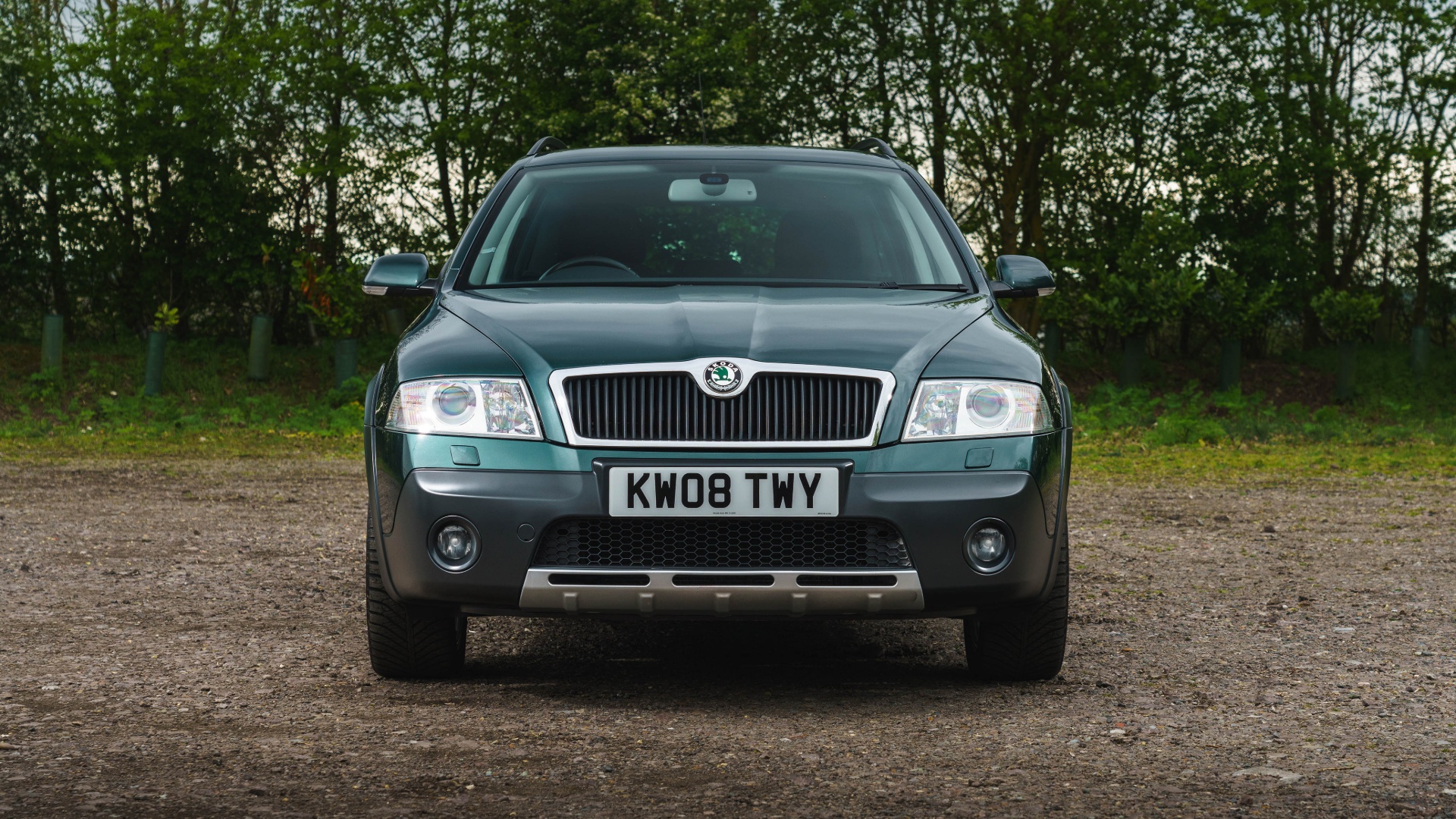
In essence, the Scout combines the rugged styling, loftier ground clearance and four-wheel drive of an SUV with the superior dynamics and fuel-efficiency of an estate car.
An extra 40mm beneath the wheelarches and Haldex variable 4WD mean it will tackle gravel tracks or muddy lanes with confidence. But the rear wheels are only engaged when needed, so quoted fuel economy is a car-like 44mpg.
Skoda Octavia Scout – 2008

The Mk2 Scout still looks the part, thanks to muscular body cladding and skid plates beneath both bumpers. Inside, snazzy kickplates and a ‘4×4’ logo on the gearknob hint at its added potential.
Buyers could have a 150hp 2.0-litre petrol version, but most opted for the 140hp 2.0 diesel. It produces 140hp and propels the 1,625kg Skoda to 122mph.
Skoda Octavia Scout – 2008
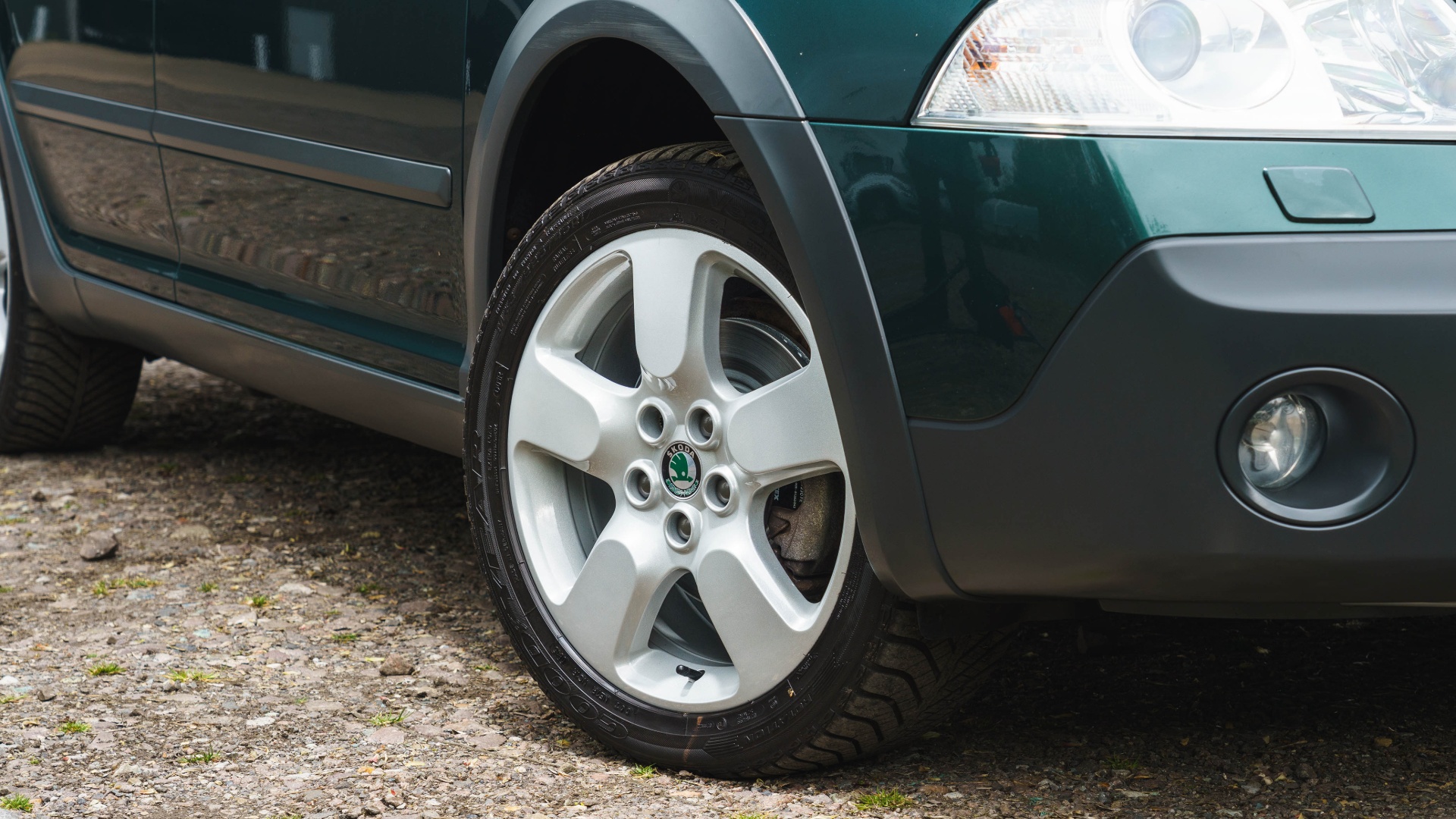
On the road, the Scout feels as intuitive and inoffensive as a regular Octavia. Granted, there’s a little more lean when cornering, and perhaps a smidge less precision from the steering. But it’s certainly more engaging than a contemporary SUV. Less ostentatious, too.
Sadly, I didn’t get a chance to sample the Scout on rough terrain. Suffice to say, the original press photos – which show it clambering over rocks and dive-bombing through streams – are testament to its prowess.
Skoda Octavia vRS Mk3 – 2019
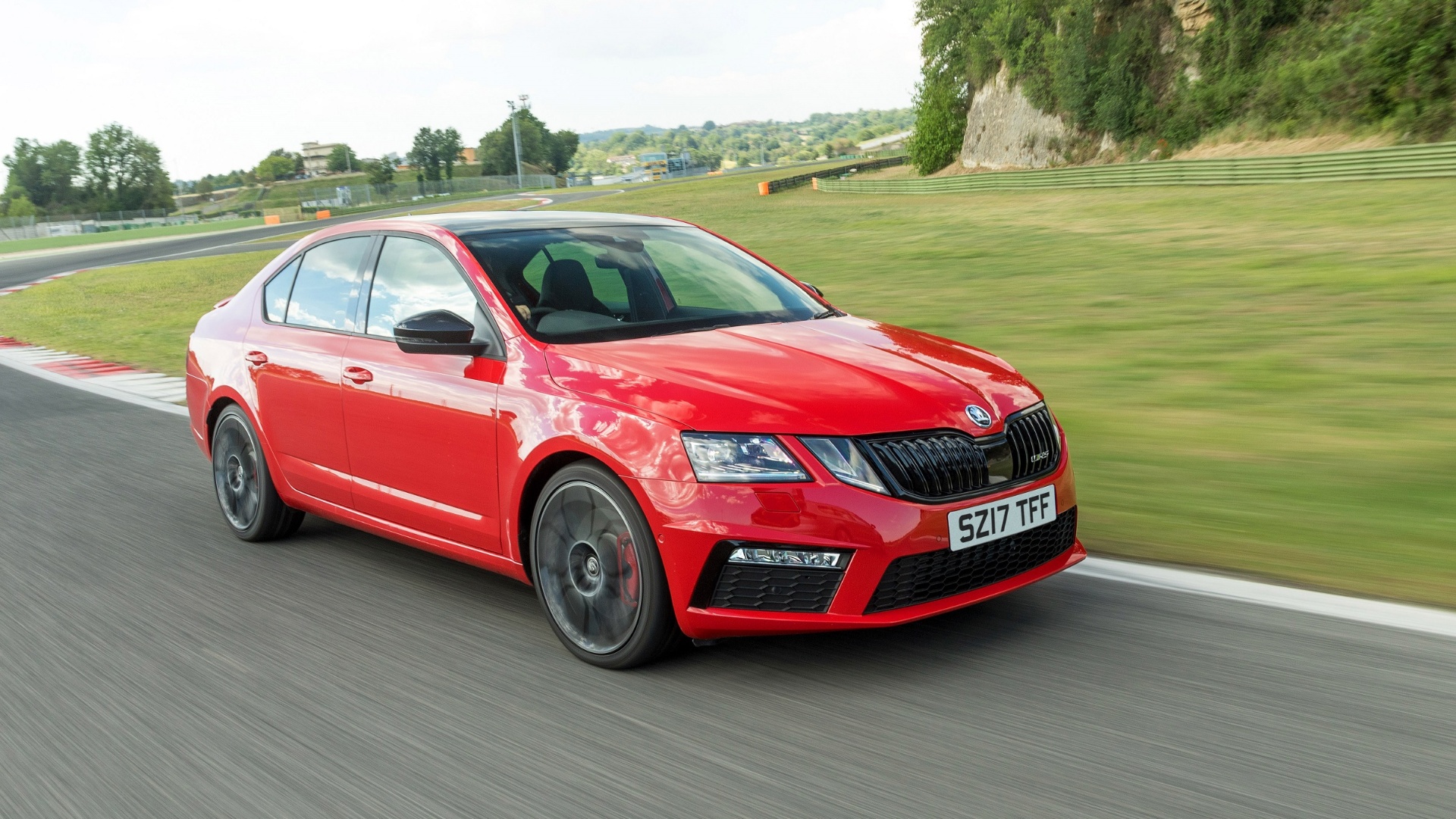
I then sampled the fourth-generation Octavia – again in sporty vRS guise. Its 245hp 2.0 TSI engine packs a healthy 65hp more than the original, cutting the 0-62mph dash to 6.6 seconds. Top speed is limited to 155mph.
A base price of £27,640 still undercut most rivals, although my test car cost £29,360 after options. These included the Audi-style Virtual Cockpit display (£450) and lane-assist with blind-spot detection (£400). Both were, of course, unheard of back in 2001.
Skoda Octavia vRS Mk3 – 2019

In time-honoured tradition, the Octavia doesn’t shout about its added performance. Despite hip-hugging sports seats, red stitching and a smattering of vRS badges, its interior lacks the wow-factor of a Golf GTI. No complaints about build quality, though.
The eight-inch touchscreen media system is a highlight. It syncs seamlessly with your mobile phone via Apple Carplay or Android Auto. There’s also a choice of driving modes: Eco, Comfort, Sport and Custom.
Skoda Octavia vRS Mk3 – 2019

The spiciest Octavia came in three outputs: 184hp diesel, 230hp petrol and the vRS 245 petrol tested here. The top-dog 245 has a limited-slip differential as standard, but four-wheel drive is only offered on the diesel.
That diff makes a marked difference on the road, tightening turn-in and helping you slingshot out of bends. Switching to Sport sharpens things further without ruining the ride. The gruff growl of its engine sounds slightly synthetic, but there’s something addictive about its elastic mid-range punch.
Skoda Octavia vRS Mk3 – 2019

The vRS 245 is the joint most powerful production Octavia – matching the new RS iV. It’s a strong contender for the ‘only car you ever need’ title: exciting on a B-road, refined on the motorway and roomy enough for family life.
It bowed out in 2019, on the Octavia’s 60th anniversary, making way for the fifth generation car.
Skoda Octavia Mk5 – 2020

With more than 6.5 million Octavias sold, the current car debuted in November 2019 – and Skoda didn’t mess with a successful formula. Slimmer headlights and sharper contours provide a contemporary look, but it retains the adaptable MQB platform underneath.
Big-selling engines for the new Octavia are likely to be the 150hp 1.5-litre TSI petrol, along with the 115hp or 150hp 2.0 TDI diesels.
Skoda Octavia Mk5 – 2020

The Octavia Combi estate has the largest boot in its class (a whopping 640 litres, versus 600 litres for the hatchback) and neatly integrated roof rails, plus plenty of the ‘Simply Clever’ features Skoda is famous for.
These include smartphone storage pockets on the seat-backs, pop-out umbrellas in the front doors, retractable blinds for the rear side windows and an integrated funnel for filling the windscreen washer tank.
Skoda Octavia RS iV – 2020
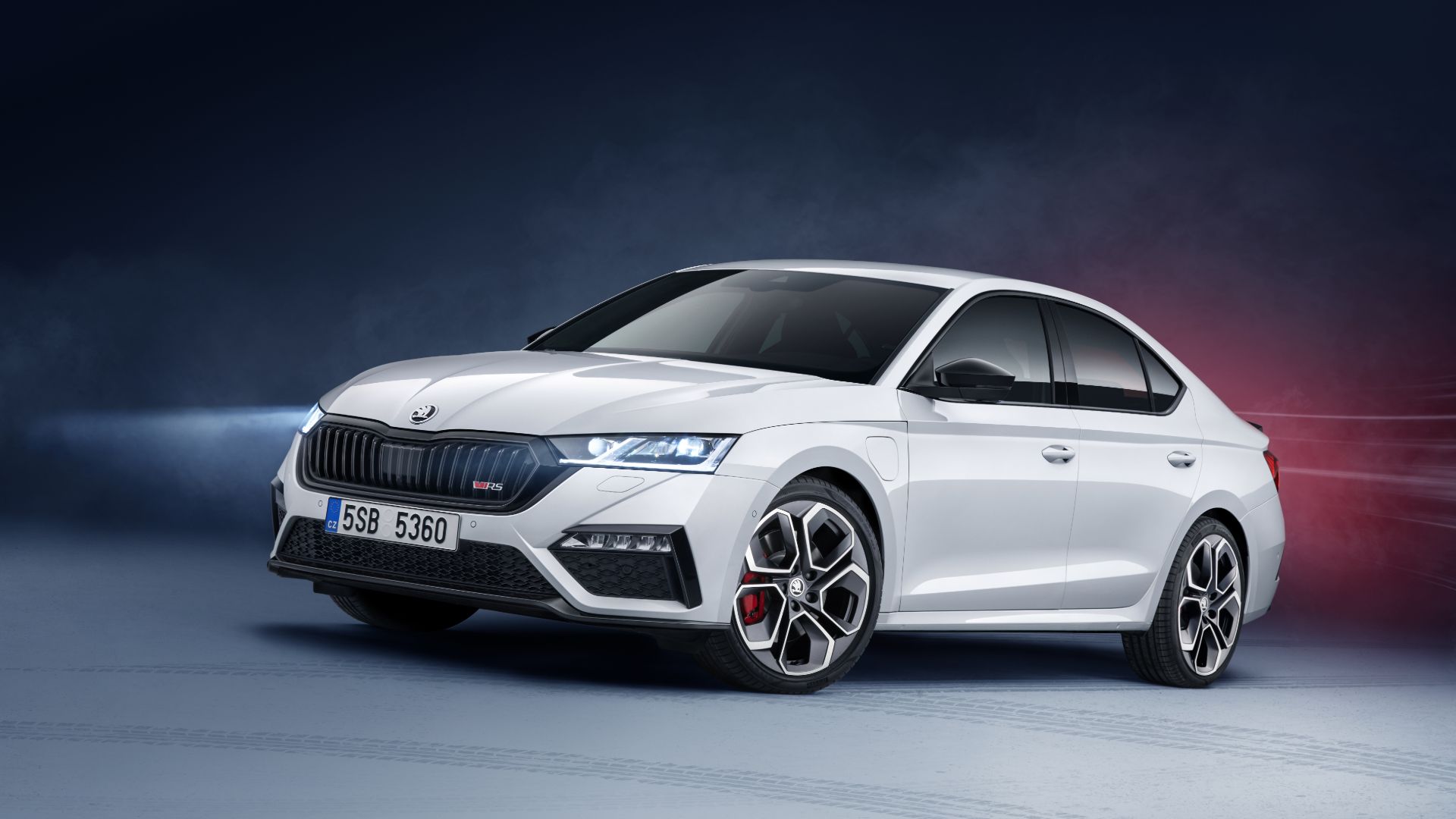
‘Sustainable yet sporty’ is Skoda’s tagline for the new hybrid RS iV. A 1.4 TSI petrol engine and 85kW electric motor deliver a combined output of 245hp: good for 0-62mph in 7.3 seconds. However, CO2 emissions of just 30g/km are the real headline figure here.
Expect the RS iV to be the first of many plug-in performance cars from Skoda. We can’t wait to try one.


